|
Location Aomori City Equipment Zoom F4 Sennheiser MKH 60 Boom pole array As one of her last official duties in Japan, my partner needed to travel to Aomori for a farewell function. I also needed visit Aomori city as well so it was a convenient occasion for us to travel up and stay over night. While the official function was on I had about 3 hours with which to walk along the Aomori foreshore and see what I could find of interest. I recorded some fairly interesting wave sounds beneath a large concrete fishing wharf. Some good natural reverb as the waves hit the concrete was an interesting result. I needed to explain to some local fishermen exactly what I was doing and why, which was slightly tricky with my broken Japanese, but they either got my point, or just put it down to me being another crazy foreigner which pretty much amounts to the same thing. Like Hachinohe there are a lot of industrial and shipping areas along the coast near Aomori City, but because it was late in the day most of them had shut down for the week. The highlight of the walk was a large tugboat sitting idling next to one wharf. The engines on those beasts must be massive because I couldn’t get close to it without maxing out my recording levels, even with the levels set very low. In the end the sample I added to the library was one taken still about 5 meters away. The tug had a great low end rumble to its engine sounds so I was really happy to have a chance to record it. In all, I walked almost non stop for three hours recording as I came across things of interest. I probably covered about 15Km and it occurred to me that if I could spend most of my time just walking around and recording sounds it would be good way to pass the time for 10 to 20 years. The only really excellent sound for today was the tug boat, but if I get one sound of that quality and interest out of 3 hours of walking and recording then I consider it a success. There will always be lots of more common sounds that I will capture along the way, and I am never going to run out of material to add to the library, but one really good sound makes he whole day worthwhile.
0 Comments
Location Mount Osoresan Equipment Zoom F4 Sennheiser MKH 60 Boom pole array With only a few weeks left in Japan we wanted to revisit Mt. Osoresan one last time. Mt Osoresan translates to mean Mount Fear, and it is the second most holy place in Japan after Mt Fuji. There is a large temple complex there and many believe it is where many spirits go when they die. The mountain itself is an inactive volcano but there is still a lot of activity from hot springs, steam outlets and sulfur everywhere. The trip up the mountain supplied some good opportunities to record some more Japanese bird sounds as well as the first instances of the summer insects. There are various Crickets and Cicadas that are active during Japanese summertime, but the species vary greatly across the island. The sounds of the insects in the south of the country are completely different from those in the middle of the country and again in the north of the country. 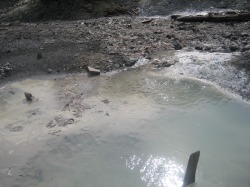 Osoresan Volcanic Pool Once we got to the temple complex itself I was able to record various samples of gases escaping the ground under pressure bubbly pools, and other interesting volcanic activities. Some of the sound sources were very quiet and were tricky to isolate, however most of the Japanese visitors to Osoresan are there only for the temple area, so it was possible to move away from the crowds and get some good material. Visually Osoresan looks far more appropriate when it's overcast and raining, maybe it complements the “place of the dead” feel, but having a clear sunny day was far more useful for recording quiet sounds. Osoresan is the second most holy place in Japan and many people come here to pray for the souls of young children. There are dozens of statues and little idols dedicated to children who have passed away. There are also dozens of brightly colored pinwheels that blow in the wind constantly. I guess these are to cheer the spirits of the departed children. I found the area very peaceful without being ominous. Many Japanese seem to be very uncomfortable with the place and were surprised we went there. The contrast between the bleak gray volcanic crater and the brightly colored children s toys and pinwheels is really interesting. Osoresan is a place where people come to visit the spirits of departed children and as such they leave toys and snacks that children would love. The pinwheels are very common and add a unusual feeling to the atmosphere as they spin in the wind. It is places like Osoresan that really add to the feeling of mystery in Japan. A country with amazing modern technology living side by side with centuries old traditions and beliefs. Location Hachinohe and Aomori Equipment Zoom F4 Sennheiser MKH 60 Boom pole array Even in the remote northern area of Japan there are many different train lines. Japan has an extensive and very effective rail network. The unusual thing is that every single line seems to utilize its own unique set of rolling stock. A one hour express train trip from Hachinohe to Aomori City (two main city centres in Northern Japan) gave me the opportunity to record no less than 5 or 6 different engine sounds from various angles and distances. The express train I travelled north on was quick and fairly quite inside however the local train I returned on was a simple two carriage setup with lots of bumping and squeaking to record. Japanese are unusual in that they will often travel long journeys without speaking to each other so I had the opportunity to record many of the train’s sounds that I would only have otherwise gotten if I’d had the entire train to myself. I doubt I will be this lucky in other countries. I will attempt to research the exact model numbers of all the trains I recorded as this might be useful or of some interest to some people. 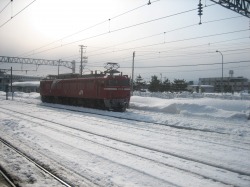 Diesel engine in the snow This picture was taken earlier in the year when it was still snowing. I did record the engines on this trip, but it was before I started the regular journal entries. Any trip by train in Japan provides the opportunity to see many different types of rolling stock, and they all sound just slightly different. Location
Sannohe Aomori Japan Equipment Roland R09 Handheld Sannohe Town area As with a great many recordings today was simply opportunistic. The rainy season will be starting soon throughout Japan and so rain showers are becoming more common. On a brief trip through town I noticed the water flow in the drain system was not only quite strong, but seemed to be flowing in audible waves. The end result could be quite effective to simulate an underground river or something similar. I did however reconfirm the important lesson of “make sure you empty your memory card regularly” as I ran out of storage space. Typically once I had filled my memory card a seagull decided to sit next to me and make lots of unusual squawking sounds. Location Sannohe Aomori Japan Equipment Zoom F4 Sennheiser MKH 60 Boom pole array Sannohe Town area In Japan council workers will work even on Saturdays, and recently the town council has been resurfacing the roads through the centre of town. This was a good opportunity to record a variety of material. The process involves several pieces of heavy machinery from a standard small scale earth mover to rollers and a machine that lays out bitumen. I tried to get isolated samples of each of the larger machines, but the various stages of work occur simultaneously, so most of the samples contain the general ambiance of a busy work site. It is also the time of year for farmers to be planting their rice fields. Many farmers still do all of this by hand, but many use a small strange looking tractor that has metal wheels fro moving through muddy rice fields. The tractor takes fresh rice stalks and sows them into the ground in a rotary mechanical motion. I am hoping that the sounds from this carry above the general running sound of the tractor as they are an interesting combination of mechanical whirring and a watery slosh sound. Finally today I was able to capture two frogs who have taken up residency in an unused swimming pool. The local elementary school has a pool that looks like it has not been used for several decades (probably since the economic crash in the 80’s I suspect) As a large body of water I am surprise there were not more frogs present. It did allow me to get a good clean sample of just two frogs isolated instead of the usual horde of frogs present in the rice fields in this area.
Location Nanbu Aomori Japan Equipment Zoom F4 Sennheiser MKH 60 Boom pole array The nearby peony garden at the foot of Mount Nakui will be holding its festival this weekend. This was a good opportunity to visit the garden before all the visitors arrived and have a look as well as see if there were any birds that could be recordable. There were in fact quite a few birds in the surrounding forest however the wind was a little strong to get an nice isolated bird sound, however it was possible to get some fairly good general ambience with wind and a selection of birds together. By far the most annoying aspect was the almost continual series of aeroplanes flying overhead. Jumbos have the annoying ability to be heard almost from horizon to horizon, so a single plane can disrupt recording for 5 to 10 minutes. The real event of this trip was an unexpected opportunity to record something in a drain. I believe it was a frog, as that would be the most logical thing to be sitting in a drain, however its sounds were a combination of slightly croaky frog sounds and all together non froggy squeaks. I did try to see into the drain but whatever it was I could not see it. I have classified this one as a frog sound, but I cannot be totally certain of its identity. Once again it seems to be the things you don’t expect that are the most interesting. Anna's Father, step Mother and brother are over visiting us, so we went to see some snow. There are plenty of mountains in our area, but Hakone is one I had not been to either so she thought it would be a good choice. the weather was really nice and the view was great. I managed to record the most obvious thing, walking through the snow, and in fact got some good material because there was very deep snow as well and the sound is quite different to walking through shallow snow. I also discovered another trick by accident that I am going to share. I had often wondered about recording skiing as it would be great to have some sounds, but it would be difficult because even if you could attach mics to a set of skis the wind noise would be terrible. Quite by accident today I discovered that moving your gloved hand over the surface of the snow sounds alot like skiing. Its makes sense as its just a surface moving against the snow, and its all essential a type of white noise, but when recorded it sounded very realistic. In fact if you move your hand quickly and change direction back and forth you can really simulate the sound of someone skiing and turning. Its a much easier method and probably safer than strapping microphones to someone as they fly downhill.
Relocated to Aomori Japan
To a town called Sannohe which is between Ninohe and Hachinohe I'm back in Sannohe after a year living in Tokyo. It's great to be back with Anna and I'm really happy to be back in the nice quiet countryside. Tokyo was great, but it just felt too hectic and noisy a lot of the time. I will now be undertaking far more regular recording as I make the most of my time left in Japan. Location Aomori Japan Equipment Edirol R09 Handheld This is the first recording I made in Japan long before I started the organized journal entries. Thanks to my digital camera logging information like date and time I can add this entry under the correct date from the photos I took on the day. Nebuta is one of the biggest annual festivals in Japan. It is held in August each year in Aomori City which is the capitol of the Amori Prefecture. People in Aomori spend weeks practicing for the festival and building beautiful floats out of paper in the lead up to the festival each year. They have to build new floats for each festival because the end of the festival involves setting all the floats out to sea where they set them on fire. This is a beautiful and tragic event as it is sad to see such amazing constructions destroyed each time. The4 festival runs for several days and has a gigantic street parade at night. There are over 2 million people who attend Nebuta every year. I had not been in Japan for very long when my girlfriend (now wife) suggested we go along. I was still a little culture shocked from the huge difference between Australia and Japan, and I was actually reluctant to go along to things like this as I felt uncomfortable with there being so many people. To her credit Anna did convince me to go and I am so happy she did as it was truly amazing. We dressed up in the traditional yukata costumes and participated in the parade itself. Cheering and chanting and jumping up and down, there was so much energy it was incredible. Each person in the parade had dozens of little bells attached to their costumes to add to the noise, as we proceeded around the town we would detach the bells and throw them to people in the audience who were very keen to catch them as they were seen as very lucky. The music itself consisted of a fairly basic drum and flute pattern and some chanting, but when that simple drum pattern is played by literally dozens of drums on giant trailers the result is incredible. The floats themselves had lights inside them to make them glow and they were carried by teams of people who made them charge and sway back and forth. Japan is full of festivals especially in Spring and summer, by comparison Nebuta is quite a late festival coming at the end of summer.
|
AuthorStephan Schütze has been recording sounds for over twenty years. This journal logs his thoughts and experiences Categories
All
Archives
April 2019
|
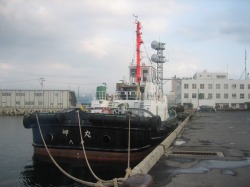
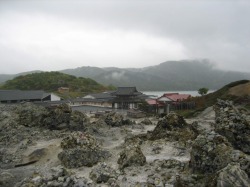
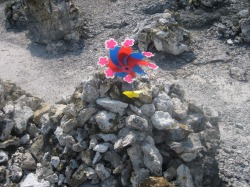
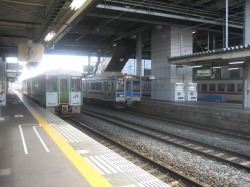
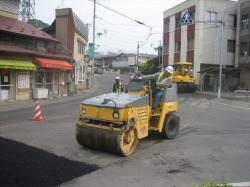
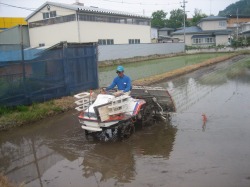
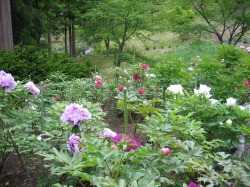
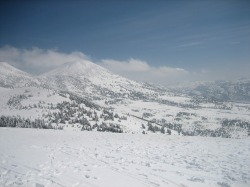
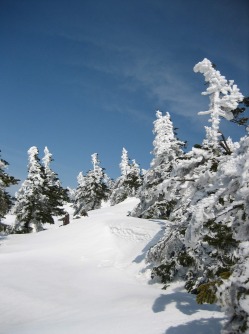
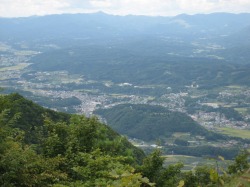
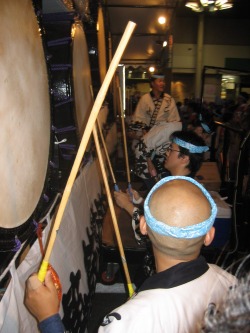
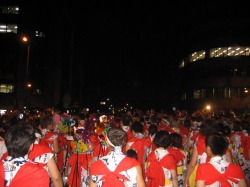
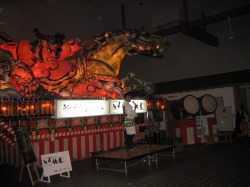
 RSS Feed
RSS Feed
